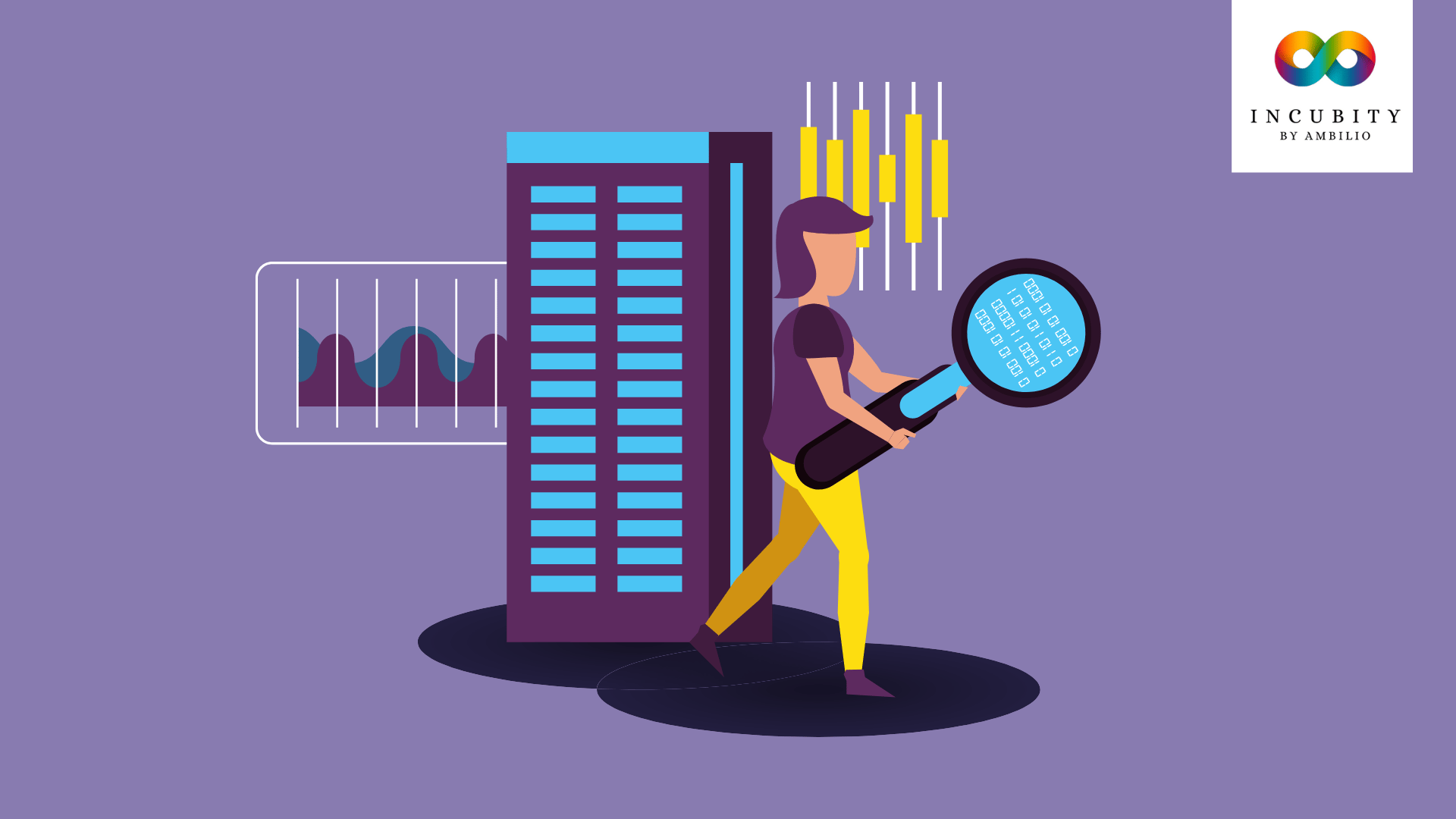Data streaming is a technique used in data processing that involves processing data in real-time as it is generated or produced. It is different from traditional batch processing, where data is collected over a period of time before being processed in a single batch.
In data streaming, data is processed continuously in small, incremental batches or chunks as it arrives, allowing for real-time analysis and faster decision-making. This technique is particularly useful in scenarios where the data is constantly changing, such as in stock market trading, social media analytics, or IoT applications.
Data streaming offers a number of benefits over batch processing, including real-time analysis, improved accuracy, and reduced latency. Real-time analysis enables businesses to react quickly to changes in their data and take action in real-time, such as detecting fraud or monitoring customer behaviour. Improved accuracy is achieved through real-time processing and analysis of data, enabling businesses to make more accurate decisions based on the latest information. Reduced latency allows businesses to quickly identify and respond to issues or opportunities, leading to faster and more effective decision-making.
Data streaming also enables businesses to process large volumes of data in real-time without overburdening their resources. It allows for a more efficient use of computing resources as data is processed only when it is received, rather than processing entire datasets all at once. It is a powerful technique used in modern data processing that enables real-time analysis, improved accuracy, and reduced latency. It is becoming increasingly important in today’s data-driven world where businesses require fast and accurate insights to stay competitive.
Data Streaming Architecture
The architecture of a data streaming system typically consists of four main components: data sources, data streams, processing nodes, and output destinations.
- Data sources: These are the original sources of the data that is being processed. They could be databases, applications, sensors, or any other type of system that generates data.
- Data streams: A data stream is a continuous flow of data that is generated by the data sources. It could be unbounded, meaning the stream has no fixed size or endpoint, or bounded, meaning the stream has a fixed size or endpoint.
- Processing nodes: These are the nodes in the system that perform operations on the data streams. Processing nodes can perform a wide variety of operations, such as filtering, aggregation, transformation, and enrichment.
- Output destinations: These are the destinations where the processed data is sent. They could be databases, data warehouses, visualizations, or any other type of system that consumes data.
There are two main types of data streams: unbounded and bounded.
- Unbounded data streams: These are data streams that have no fixed endpoint and can continue indefinitely. They are typically used in scenarios where data is being generated in real-time, such as social media feeds, IoT sensor data, or stock market prices.
- Bounded data streams: These are data streams that have a fixed endpoint or size. They are typically used in scenarios where data is generated at regular intervals, such as logs or financial data.
Data streaming systems can be implemented using a variety of tools and technologies, such as Apache Kafka, Apache Flink, and AWS Kinesis. These tools provide a framework for building scalable and fault-tolerant data streaming systems that can process large volumes of data in real-time.
Data Streaming Tools and Technologies
Discuss some of the popular data streaming tools and technologies, such as Apache Kafka, Apache Flink, Apache Spark Streaming, and AWS Kinesis. Explain their features and use cases. There are several popular data streaming tools and technologies available, each with their own features and use cases. Here are some of the most commonly used data streaming tools and technologies.
Apache Kafka
Apache Kafka is an open-source distributed streaming platform that can handle large volumes of real-time data from various sources. It provides a high-throughput, low-latency platform for data streaming, allowing data to be ingested, processed, and delivered in real-time. Kafka is highly scalable, fault-tolerant, and can handle millions of events per second. Kafka is used in a variety of use cases, such as real-time analytics, fraud detection, and IoT data processing.
Apache Flink
Apache Flink is an open-source distributed processing engine that supports both batch and stream processing. It provides a high-performance, fault-tolerant platform for real-time data streaming, allowing data to be processed and analyzed in real-time. Flink is highly scalable and can handle large volumes of data with low latency. It is used in a variety of use cases, such as real-time analytics, fraud detection, and IoT data processing.
Apache Spark Streaming
Apache Spark Streaming is an open-source data processing engine that allows for real-time data streaming processing using Spark’s batch processing engine. It provides a high-throughput, fault-tolerant platform for data streaming, allowing data to be processed in real-time. Spark Streaming can handle millions of events per second and is highly scalable. It is used in a variety of use cases, such as real-time analytics, fraud detection, and IoT data processing.
AWS Kinesis
AWS Kinesis is a managed service provided by Amazon Web Services that allows for real-time data streaming processing. It provides a highly scalable, low-latency platform for data streaming, allowing data to be processed and analyzed in real-time. Kinesis can handle millions of events per second and is highly fault-tolerant. It is used in a variety of use cases, such as real-time analytics, log processing, and IoT data processing.
Each of these data streaming tools and technologies has its own unique features and use cases, and the choice of tool will depend on the specific requirements of the use case. Ultimately, the goal is to choose a tool that provides the necessary features and performance to handle the volume and complexity of the data being processed.
Use Cases
Data streaming has become an important tool for many businesses across various industries. Here are some of the common use cases for data streaming:
Real-time analytics
Data streaming is used to perform real-time analytics on large volumes of data. Real-time analytics is critical in many industries, such as finance, healthcare, and retail, where real-time insights can help companies make quick decisions. For example, financial institutions can use data streaming to detect fraudulent transactions in real-time, while healthcare providers can use it to monitor patient health data in real-time.
Fraud detection
Data streaming is used to detect fraud in real-time. Fraud detection is critical in industries such as finance and retail, where fraudulent activities can result in significant financial losses. For example, credit card companies use data streaming to detect fraudulent transactions in real-time, while retailers use it to detect fraudulent returns and refunds.
IoT
Data streaming is used to process and analyze data from IoT devices in real-time. IoT devices generate large volumes of data that need to be processed quickly to extract valuable insights. For example, manufacturers can use data streaming to monitor and optimize their production lines in real-time, while transportation companies can use it to track and optimize their fleet operations.
Social media analysis
Data streaming is used to monitor and analyze social media data in real-time. Social media data provides valuable insights into customer behavior and sentiment, which can help companies make informed decisions. For example, companies can use data streaming to monitor customer sentiment about their brand on social media, and respond quickly to negative feedback.
Here are some examples of companies that have successfully used data streaming for their business:
- Netflix: Netflix uses data streaming to monitor and analyze user activity on their platform in real-time. This helps them to personalize recommendations and improve the user experience.
- Uber: Uber uses data streaming to track and optimize their fleet operations in real-time. This helps them to provide a better user experience and reduce wait times.
- Airbnb: Airbnb uses data streaming to monitor and analyze user activity on their platform in real-time. This helps them to improve the user experience and provide personalized recommendations.
- Capital One: Capital One uses data streaming to detect fraudulent credit card transactions in real-time. This helps them to prevent financial losses and protect their customers.
Overall, data streaming has become an essential tool for many businesses across various industries. It enables real-time analysis, improved accuracy, reduced latency, and provides valuable insights that can help businesses make informed decisions.
Best Practices
Implementing data streaming can be a complex process, but there are some best practices that businesses can follow to optimize their data streaming systems for performance and reliability:
- Data validation: Validate the data at every stage of the data streaming pipeline to ensure that it is accurate and complete. Data validation helps to detect errors and inconsistencies in the data, which can affect the accuracy of the analysis.
- Fault-tolerance: Implement fault-tolerance mechanisms to ensure that the data streaming pipeline can continue to operate even in the event of failures. Fault-tolerance mechanisms such as data replication and automatic failover can help to prevent downtime and data loss.
- Scalability: Design the data streaming pipeline to be scalable to handle large volumes of data. The pipeline should be able to scale up or down based on the volume of data being processed.
- Performance optimization: Optimize the data streaming pipeline for performance by reducing processing times and improving the throughput of the pipeline. This can be achieved by using techniques such as data partitioning and parallel processing.
- Monitoring and logging: Implement monitoring and logging mechanisms to track the performance and reliability of the data streaming pipeline. Monitoring and logging can help to detect issues early and prevent downtime.
- Security: Implement security measures to protect the data being streamed and ensure that the pipeline is not vulnerable to cyber attacks. This includes using encryption, access controls, and implementing secure network configurations.
- Testing: Test the data streaming pipeline thoroughly before deployment to ensure that it is working correctly. This includes testing for scalability, performance, and fault tolerance.
By following these best practices, businesses can optimize their data streaming systems for performance and reliability. This will help them to extract valuable insights from their data in real-time and make informed decisions.
The Challenges
While data streaming can provide many benefits to businesses, there are also several challenges that must be addressed when implementing data streaming:
Data integrity
Ensuring the accuracy and consistency of the data can be a challenge when implementing data streaming. To address this, businesses can implement data validation mechanisms at each stage of the data streaming pipeline to ensure that the data is accurate and complete.
Security
Data streaming can create security risks if the pipeline is not properly secured. To address this, businesses should implement security measures such as encryption, access controls, and secure network configurations to protect the data being streamed.
Cost
Data streaming can be expensive, especially if businesses need to process large volumes of data in real-time. To address this, businesses can consider using cloud-based data streaming solutions, which offer flexible pricing models and the ability to scale resources up or down based on demand.
Scalability
Ensuring that the data streaming pipeline is scalable to handle large volumes of data can be a challenge. To address this, businesses can design the pipeline to be scalable from the beginning, using techniques such as data partitioning and parallel processing to distribute the workload across multiple processing nodes.
Monitoring and management
Monitoring and managing the data streaming pipeline can be a challenge, especially as the volume of data increases. To address this, businesses can implement monitoring and management tools to track the performance and reliability of the pipeline and detect issues early.
By addressing these challenges, businesses can implement data streaming solutions that provide real-time insights into their data while ensuring the accuracy, security, and scalability of their data streaming pipeline.
Future of Data Streaming
Data streaming is a rapidly evolving field, and there are several trends that are shaping the future of data streaming:
- Artificial Intelligence (AI): AI is playing an increasingly important role in data streaming, enabling businesses to analyze and act on data in real-time. AI technologies such as machine learning and deep learning can be used to detect anomalies, predict trends, and automate decision-making processes.
- Edge Computing: Edge computing is emerging as a key technology in data streaming, enabling businesses to process data closer to the source and reduce latency. Edge computing can also help to address the scalability challenges of data streaming by distributing the workload across multiple edge devices.
- Serverless Architectures: Serverless architectures are becoming increasingly popular in data streaming, as they offer a more cost-effective and scalable way to process data. Serverless architectures allow businesses to focus on their data and analysis without worrying about infrastructure management.
To prepare for the future of data streaming, businesses can take several steps:
- Invest in AI: Businesses can invest in AI technologies to improve the accuracy and efficiency of their data streaming pipelines. This includes using machine learning algorithms to detect patterns and anomalies in data and using deep learning models to make predictions.
- Embrace Edge Computing: Businesses can embrace edge computing by investing in edge devices and implementing edge computing technologies to reduce latency and improve scalability.
- Adopt Serverless Architectures: Businesses can adopt serverless architectures to reduce costs and improve scalability. This includes using cloud-based serverless platforms such as AWS Lambda or Google Cloud Functions.
- Build a Data-Driven Culture: Businesses can build a data-driven culture by investing in data literacy training and empowering employees to use data to make informed decisions.
By embracing these trends and preparing for the future of data streaming, businesses can stay ahead of the curve and extract maximum value from their data.








